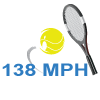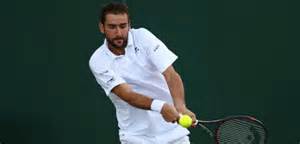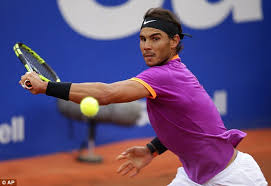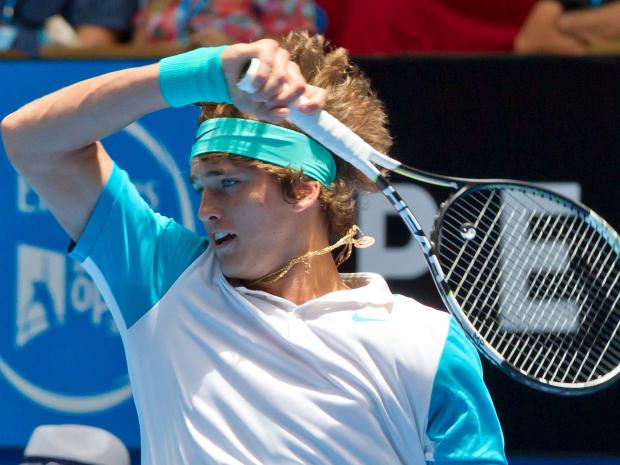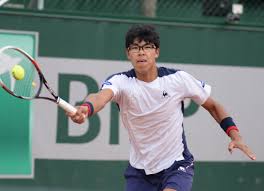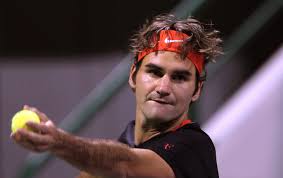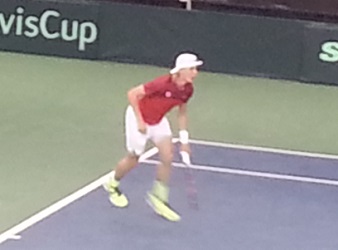Tennis: The 2018 Australian Open’s revelations so far.
The reader stands warned that this post is not for the faint-hearted, excessively sentimental, and hardcore fan.
The undisputed GOAT, Rod Laver, was right, and 2018 is indeed the year of the changing of the guard and the 2018 Australian Open’s revelations support Laver’s observation.
Our takeaways from the 2018 Australian Open so far.
Rafael Nadal and Novak Djokovic were wounded in the war of attrition and hoist by their own petard. Andy Murray wasn’t even fit enough to wield his racket, and at thirty plus, in age, these are ominous signs of an impending end. Only Roger Federer, from the big three, is left in the tournament and bears the entire burden of salvaging the first slam of the year. Not to belittle the others, but how many will tune in to view a Hyeon Chung versus Marin Cilic or a Kyle Edmunds versus Thomas Berdych on Sunday? Here are some other revelations of the tournament so far.
Something must be done about the courts.
I write this at the end of a thirty-seven shots rally at 1-0 in the second set between Tennys Sandgren and Hyeon Chung at the Rod Laver arena. Isn’t the court at the Rod Laver arena supposed to be playing fast? In fact, the Rod Laver court by many accounts could be playing the fastest of all the slams except, probably the center court, at the Wimbledon. However, we ask what have they done to the courts? Have they slowed the balls, or are twenty, or more, shots rallies the norm now? The rallies never seem to end!
Even the Grigor Dimitrov versus Nick Kyrgios had its share of long rallies which are quite unusual in a Nick Kyrgios match. Dimitrov had ample time to reach the most well-placed shots. The one between Rafa and Cilic was all about Cilic, the aggressor, running Rafa, the defender, ragged across the court and the defender winning most of those rallies. Nadal would have probably won if he did injure his hip in the fourth set. Moreover, it seems Caroline Wozniacki’s, Simona Halep’s, and Agnieszka Radwanska’s earlier rounds were being telecast in slow motion, and these three either are or have been in the top three.
The, so called, fast courts of the Australian Open 2018 have been designed for the likes of Hyeon Chung and Simona Halep, who at their very peak of aggressive best are nothing more than exceptional baseline retrievers.
They have got to make the courts’ surfaces even faster at not just the Australian Open but also at the other slams, including Roland Garros, if possible. Speed up the game, please.
Rafael Nadal will be retiring within eighteen months.
Rafael Nadal’s game is stuck in the clay and time warp. It refuses to wriggle out of the endless loop of loopy forehands whacked to the backhand corner of the opponent. Can Rafael Nadal flatten that forehand a bit? Nadal, however, is busy bemoaning the shortening of points and rallies. “People are going for the point quicker than before. The players are returning faster than before, going for the winners since the return. From the baseline, at the minimum opportunity, people go for the shot, no, Nadal said. “We used to wait for the right ball to go for the winner. Now you go for the winner even in not very good positions,” he added.
When asked about his injuries infested career after the loss, Nadal blamed the court surfaces. “Somebody who is running the tour should think a little bit about what’s going on. Too many people getting injured,” Nadal said. “I don’t know if they have to think a little bit about the health of the players. Not for now that we are playing, but there is life after tennis. I don’t know if we keep playing in this very, very hard surfaces what’s going to happen in the future with our lives,” he further added.
Perhaps Rafael Nadal should learn to shorten the points instead of indulging in a war of attrition on every point that he plays. The tennis authorities should do Nadal a favor and speed up the courts, including the clay, if possible. Only the speeding up of the courts would force Nadal to shorten points. Nadal is exceptional at volleying and a fantastic mover, he needs to employ those two skills to approach the net by the third or the fourth shot to end the points.
We fear that the end of the road is near for Rafael Nadal and he may retire in 2019.
How long can Alexander Zverev sustain not approaching the net?
This dude must learn to finish points at the net. Alexander Zverev cannot sustain the Novak Djokovic type playing style. He needn’t turn into his older brother but could certainly learn a little from him. If he doesn’t learn to move forward and approach the net pronto then, just like Djokovic, he’ll forever be condemned to being clumsy at it. There are many, like Chung, who can play the baseline game now. The success of Rafael Nadal and Djokovic, supported by the slowing down of the courts and advancements in string technology, has spawned hundreds, such minions, clamoring to outdo the other from the baseline.
What’s in store for Hyeon Chung?
Hyeon Chung has fashioned his game on Novak Djokovic’s baseline grind, and, as his reward, he enjoyed the honor of slaying Djokovic in the baseline war of attrition and then backing it up in the next match against Sandgren. We wish Chung the very best and hope he can take his game beyond Djokovic’s. He is a good mover and now needs to get better at all court and net elements of the game if he wishes to last long.
For Novak Djokovic, imitation may not be the best form of flattery.
When Roger Federer returned after his injury layoff in 2017, he had a retooled backhand and an even more aggressive game than before. Nothing has been added to Novak Djokovic’s game, except the change in his service motion to protect his elbow. We, at 138 mph, were certain of a less than stellar return of Novak Djokovic, and we feel vindicated. Novak has, at best, just one slam left in him provided his elbow and mind can be back on track within the next six months. We do not see Novak Djokovic playing beyond December 2019. Ironically, his Hyeon Chung like style is simply unsustainable after thirty. However, if he changes his playing style, and learns to cut points below 5 or 6 shots, then he may last until the end of 2020. We feel it is too late for Novak to change. He doesn’t have the aggressive mindset to reinvent his game. The skills honed over 25 years, of learning to prolong rather than shorten points, cannot be undone in six months.
Roger Federer is a thing of beauty, and a joy forever.
Roger Federer needs to continue whatever he has been doing since 2017 and not regress into that baseline rally mindset ever again. We, at 138mph, do not care whether he wins the Australian Open 2018 or even reaches the finals, and neither should you! If you really are a tennis aficionado and not just a fan of Federer or another player, then soak in the balance, variety, and beauty of the game while the maestro is still around.
Is Dennis Shapovalov the future of men’s tennis?
Too early to say, but he certainly possesses in abundance the talent, true all-court game, and the ability to move in and close at the net. He also wields the single-handed backhand which gives him an edge provided he is super talented and, therefore, times and not muscles the ball. However, the single hander takes a little time to mature, and we expect Dennis Shapovalov to struggle for about eighteen more months before his game turns into a “wow” inspiring spectacle like Roger Federer’s.
Dennis Shapovalov’s timing to come of age would be perfect as age, ironically, may force Roger Federer to consider retirement in 2020.
